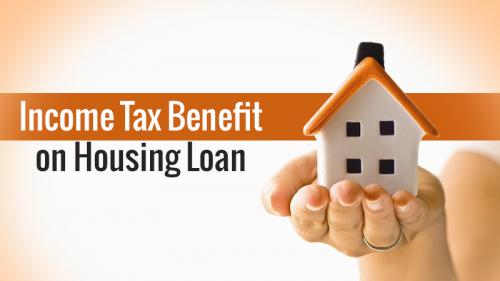Know the Home Loan Tax Benefits Missing in FY 20-21 Income Tax Slabs

During Union Budget 2020, the Finance Minister of India proposed a new tax reform with comparatively easier tax rates for different income categories. This new system will lead to the removal of several tax exemptions available previously.
The Finance Minister also mentioned that taxpayers could opt to follow through the old tax regime where they can avail the benefits of those tax exemptions.
However, those who switch to the new tax system will not be able to revert to the old tax regime.
As a homebuyer, you may benefit from the lower income tax slabs under the new tax reform, but you will not be able to avail the home loan tax benefits under Section 80C, Section 80EEA, etc.
Housing loan tax benefits missing under FY 20-21 tax reform
As per the Income Tax Act 1961, homebuyers can claim tax exemptions on their home loan EMIs. Your home loan EMIs consists of two segments, i.e. interest component and principal component. As per the old tax reform, you can claim tax exemptions on both these components of your home loan EMIs.
However, if the construction of your house is incomplete or sold within 5 years from the end of the fiscal in which you availed the housing credit, you are not eligible for such tax benefits. You can determine these exemptions by taking the assistance of a home loan tax benefit calculator.
The various tax benefits you can avail from housing credit which are missing in the new tax reform are –
· Section 80C
You can claim tax exemptions under Section 80C by opting to stay in the existing tax reform. Under this tax head, you can claim tax exemptions of up to Rs.1.5 lakh on the principal component of your EMIs. This exemption takes place from your net annual income at the end of every financial year.
Under this section, you can also avail tax benefits on expenses towards registration charges and stamp duty. However, these exemptions can be claimed only within the overall limit of Rs.1.5 lakh.
· Section 24(b)
Under this tax head in the old tax reform, you can avail tax exemptions of up to Rs.2 lakh on the interest component of your annual EMI payments. As per Union Budget 2018, the maximum tax exemption which home loan borrowers can claim in case a self-occupied property is Rs.2 lakh while there is no such upper limit of tax exemption on rented property.
Moreover, homebuyers whose property is still under construction can also avail home loan tax benefits under a particular condition which is also referred to as the per-construction interest. In such cases, you claim tax exemptions in 5 installments, starting from the fiscal in which the mortgaged property has finished construction.
● Section 80EEA
First-time homebuyers can avail additional tax exemptions of up to Rs.1.5 lakh on the interest component of their home loan repayments under Section 80EEA of the existing tax reform of 2019. Such exemptions can be claimed over the tax benefits availed under Section 24(b).
Joint home loans
It is advised to add a co-applicant while opting for a home loan to reap the tax benefits on a joint home loan. This indicates that both the co-applicants can claim tax exemptions individually on all the above tax heads while filing their income tax returns.
If you are not satisfied with your current lender, you can always opt for a balance transfer to switch to another lender that is offering comparatively lower home loan rates.
Moreover, individuals can also reap home loan tax benefits on owning a second property only if it is not let out. So, before purchasing a second property, make sure to learn about various tax exemptions and other advantages from home loans today.
Additional Read: Important Tax Benefits On Home Loan That Every Person Should Know
Comments